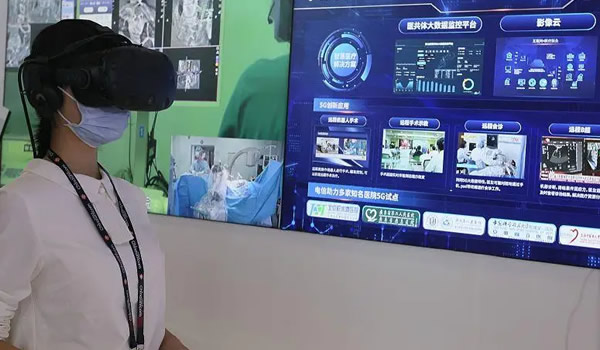Liver cirrhosis is a late stage of chronic liver disease characterized by scarring and impaired liver function. In Asia, it represents one of the leading causes of morbidity and mortality due to the high prevalence of hepatitis B, hepatitis C, alcohol-related liver disease, and increasingly, non-alcoholic fatty liver disease (NAFLD). This article explores the epidemiology, causes, complications, treatment approaches, and future strategies to manage cirrhosis in Asian populations.

Understanding Liver Cirrhosis
Cirrhosis occurs when chronic liver injury leads to fibrosis and architectural distortion of the liver. This results in impaired blood flow, portal hypertension, and reduced ability to detoxify and metabolize nutrients.
Cirrhosis is classified as:
- Compensated cirrhosis: Minimal symptoms, liver still functions relatively well.
- Decompensated cirrhosis: Severe symptoms with complications such as ascites, variceal bleeding, encephalopathy, and jaundice.
Burden of Liver Cirrhosis in Asia
- Hepatitis B virus (HBV): The leading cause in East and Southeast Asia.
- Hepatitis C virus (HCV): Significant burden in South and Central Asia.
- Alcohol-related liver disease: Rising in countries like India, Vietnam, and China.
- Non-alcoholic fatty liver disease (NAFLD): Rapidly increasing in urban populations due to obesity and diabetes.
- Global mortality: Cirrhosis is the 11th leading cause of death worldwide, with Asia contributing a major share.
Causes of Liver Cirrhosis
- Viral Hepatitis Chronic HBV: Endemic in China, South Korea, Vietnam, and the Philippines. Chronic HCV: High prevalence in Pakistan, Egypt (border region), and parts of India.
- Alcohol Abuse Increasing alcohol consumption in Asia contributes significantly to cirrhosis burden.
- Non-Alcoholic Fatty Liver Disease (NAFLD) Linked to obesity, diabetes, and metabolic syndrome. Expected to surpass viral hepatitis as leading cause in urban Asia.
- Other Causes Autoimmune hepatitis. Genetic conditions (Wilson’s disease, hemochromatosis). Drug-induced liver injury.
Symptoms of Cirrhosis
- Fatigue, weakness, and loss of appetite.
- Jaundice (yellowing of eyes and skin).
- Itchy skin.
- Swelling in legs, ankles, and abdomen (ascites).
- Easy bruising or bleeding.
- Confusion or memory problems (hepatic encephalopathy).
Complications of Cirrhosis
- Portal Hypertension Enlarged veins (esophageal varices) leading to life-threatening bleeding.
- Ascites Fluid buildup in the abdomen; risk of infection (spontaneous bacterial peritonitis).
- Hepatic Encephalopathy Accumulation of toxins causing confusion, drowsiness, or coma.
- Liver Cancer (Hepatocellular Carcinoma, HCC) Cirrhosis is the strongest risk factor for HCC, especially in HBV/HCV patients.
- Kidney Dysfunction Hepatorenal syndrome is a severe, often fatal complication.

Diagnosis of Cirrhosis
- Blood tests: Liver function tests (ALT, AST, bilirubin, albumin).
- Ultrasound & Fibroscan: Detect fibrosis and liver stiffness.
- CT/MRI scans: Evaluate complications and cancer risk.
- Liver biopsy: Gold standard for diagnosis but less commonly required now.
- Endoscopy: To screen for varices.
Treatment Approaches
1. Treating the Underlying Cause
- Antiviral therapy: Tenofovir and entecavir for HBV; direct-acting antivirals (DAAs) for HCV.
- Alcohol cessation: Essential to prevent further damage.
- Lifestyle interventions: Weight loss and glucose control for NAFLD.
2. Managing Complications
- Ascites: Low-salt diet, diuretics, paracentesis, or TIPS (shunt procedure).
- Variceal bleeding: Beta-blockers, endoscopic band ligation.
- Hepatic encephalopathy: Lactulose, rifaximin.
- HCC surveillance: Ultrasound every 6 months in cirrhotic patients.
3. Advanced Therapies
- Liver transplantation: Definitive treatment for decompensated cirrhosis.
- Stem cell therapy and regenerative medicine: Experimental but promising in Asia.
Daily Care and Patient Support
- Balanced diet rich in protein (unless encephalopathy present).
- Sodium restriction (<2 g/day) for ascites.
- Vaccinations (hepatitis A, hepatitis B, influenza).
- Avoidance of alcohol and hepatotoxic medications.
- Regular follow-ups with hepatologists.
Prevention Strategies in Asia
- Hepatitis B vaccination: Strong success in lowering new HBV infections.
- HCV elimination programs: Expanding access to DAAs in countries like India, Pakistan, and China.
- Public health campaigns: Reducing alcohol abuse.
- Diabetes and obesity control: Addressing NAFLD burden.
- Screening programs: For early cirrhosis and liver cancer detection.

Regional Perspectives
- China: Largest HBV burden; strong vaccination programs but millions remain infected.
- India: Rising NAFLD and alcohol-related cirrhosis.
- Japan: Historically high HCV prevalence, now declining due to antiviral therapies.
- Southeast Asia: Mix of HBV, alcohol-related, and NAFLD causes.
Future of Cirrhosis Care in Asia
- Artificial Intelligence (AI): Early detection of cirrhosis and HCC using imaging.
- Affordable antivirals: Wider availability of generics for HBV and HCV.
- Non-invasive diagnostics: Fibroscan and biomarkers replacing biopsies.
- Regional research collaboration: Shared strategies for liver disease prevention.
Conclusion
Liver cirrhosis remains a major health crisis in Asia, fueled by viral hepatitis, alcohol abuse, and rapidly rising NAFLD. While cirrhosis is not reversible, early detection, management of complications, antiviral therapies, and lifestyle modifications can significantly improve survival.
The future of cirrhosis care in Asia lies in prevention, public awareness, hepatitis elimination, and advanced therapies including transplantation and regenerative medicine. With coordinated strategies, Asia has the potential to significantly reduce the burden of cirrhosis in coming decades.